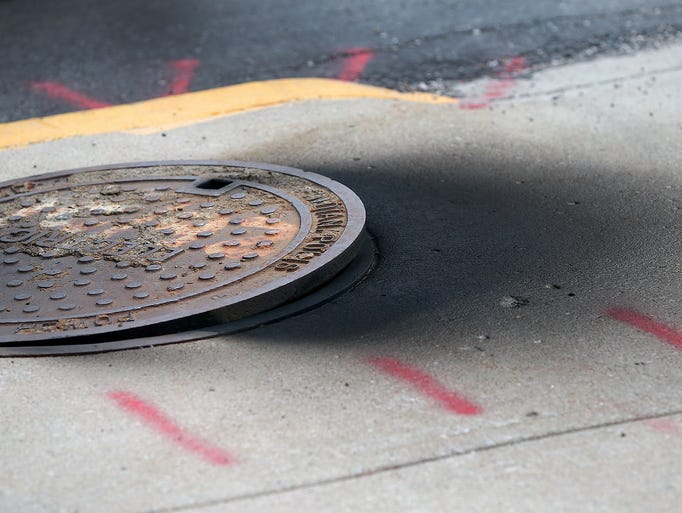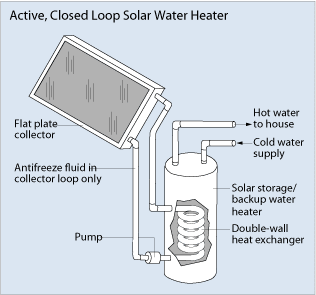Downtown explosions: What's happening
Power outages, traffic gridlock and emergency meetings by utility regulators, but no injuries
Underground explosions rocked DowntownIndianapolis again Thursday morning. Here's a quick look at the situation:
What happened?
An underground fire near the intersection of North Capitol Avenue and West North Street caused several manhole covers to blast into the air around 6:40 a.m. Thursday.
Indiana Power and Light Co. closed the intersection and shut down power in a four- to six-block radius, which caused traffic gridlocks for Downtown commuters.
When will power be restored?
IPL slowly began restoring power around 10:30 a.m. and stated that most customers should be up and running by 4:30 p.m. However, 150 customers in the four-block area of Walnut Street to Michigan Street, and Senate Avenue to Illinois Street are expected to be without power into the weekend because of damaged equipment.
Will traffic be snarled throughout the day?
Crews will be working at the intersection most of the day. Several Downtown traffic lights were still out as of 4 p.m., and will remain off during rush hour.
Is the government getting involved?
The dangerous blasts drew concern from the city and the Indiana Utilities Regulatory Commission, especially as crowds will flock to Indianapolis in April for the Final Four games.
The commission is holding an emergency conference on Friday. The city is teaming up with IPL to conduct safety checks of manhole covers around the city.
Why does this keep happening?
Manhole cover explosions have plagued the city for years. A 2011 report from the IURC said IPL needed to revamp its maintenance and infrastructure to stop the problem. Officials said then that they were taking steps to maintain and "enhance" the electrical network.
What will be done to rectify the problem?
IPL announced Thursday it would install more locks on manhole covers in the city to secure them from flying into the air.

Utility regulators to hold emergency meeting on Downtown explosions
14 underground fires or explosions Downtown since 2010
![]() Jill Disis, jill.disis@indystar.com, 1:04 p.m. EDT March 19, 2015
Jill Disis, jill.disis@indystar.com, 1:04 p.m. EDT March 19, 2015
At least 14 underground explosions or fires have been reported in Downtown Indianapolis since 2010. Here's a look at those incidents.
March 19, 2015: A series of explosions Thursday morning sent several manhole covers hurling into the air near Capitol Avenue and North Street. Power was shut off to up to six square blocks, including the heavily trafficked Meridian Street Downtown. IPL officials said the explosions were caused by a short circuit and not because of aging infrastructure. Utility regulators called an emergency meeting to address the explosions.
March 16, 2015: Police closed down a portion of Massachusetts Avenue near East New York Street after reports of an explosion in front of Starbucks Coffee. IPL said the The problem apparently occurred in a box in front of the transformer called the primary termination chamber. That's where cables from under the street enter the transformer and begin the process of reducing power from 13,000 volts to 120 volts.
Aug. 13, 2014: A series of underground explosions rocked Downtown Indianapolis on South Meridian Street between Washington and Maryland streets. IPL officials said the source of the problem was identified as the failure of an underground network protector. While no one was injured, power had to be shut off to many nearby buildings so repairs could be made.
March 13, 2014: A manhole explosion was reported near Delaware and Market streets downtown, causing traffic to be blocked off.
July 15, 2012: An underground cable in a manhole shorted out on East 16th Street Downtown. When firefighters arrived, they found smoke coming from the manhole.
July 5, 2012: Pressure from an underground cable caused a manhole lid to slide in the 300 block of Massachusetts Avenue Downtown.
July 4, 2012: Flames erupted from an underground electrical vault near the Westin Hotel Downtown, causing flames to shoot up from a sidewalk grate on South Capitol Avenue.
Jan. 16, 2012: An explosion and fire broke out at IPL's Center Substation near West and Morris streets. The fire was caused when a breaker failed, and caused nearly 10,000 IPL customers to lose power.
Nov 19, 2011: A series of underground blasts near Bankers Life Fieldhouse, then named Conseco Fieldhouse, caused flames and pillars of smoke to shoot up from manholes. The fire heavily damaged a vehicle parked near a manhole, and a cast-iron manhole cover was blown several feet into the air. IPL officials said they spliced underground cables to repair the damage, which did not result in any customers losing power. The blasts sparked concerns over whether Downtown would be safe enough for visitors to Indianapolis during the 2012 Super Bowl game. IPL officials said they purchased 100 manhole covers to lock in place so they would not dislodge. Fifty of those new covers were placed along Georgia Street, the home of the Super Bowl Village.
May 31, 2011: An explosion outside Gov. Mitch Daniels' office rattles windows at the Statehouse. IPL blames a faulty underground cable to a transformer at 46 N. Capitol Ave., which ignited a small reserve of oil in a connector box. No injuries are reported.
April 27, 2011: An underground electrical explosion blows a manhole cover into the air Downtown on Court Street. IPL says a 900-foot stretch of electrical cable apparently short-circuited and burned. Smoke is reported in the basements of at least two nearby buildings. No injuries are reported.
Jan. 30, 2011: Multiple underground explosions rock the 400 block of East Michigan Street near the Athenaeum, blowing at least five manhole covers off their bases. IPL says electrical cables caught fire but does not know whether they were the cause or merely a casualty of the explosions. No injuries are reported.
Aug. 18, 2010: An underground explosion in the 500 block of Massachusetts Avenue sends flames flying 25 feet into the air. IPL says a transformer exploded, caused by oil burn-off. No injuries are reported.
Feb. 17, 2010: An underground fire shoots flames high into the air Downtown near the entrance of Charlie & Barney's restaurant at Delaware and Ohio streets. Witnesses say they heard a loud boom. The fire forces the evacuation of about 1,000 workers from the nearby Gold Building — some of them walking down 20 flights of stairs. Fire officials say an electrical transformer near the restaurant entrance short-circuited and caught fire. The privately owned transformer is not linked to the IPL grid. No injuries are reported. Damage is estimated at $75,000.
Star researcher Cathy Knapp contributed to this report.






